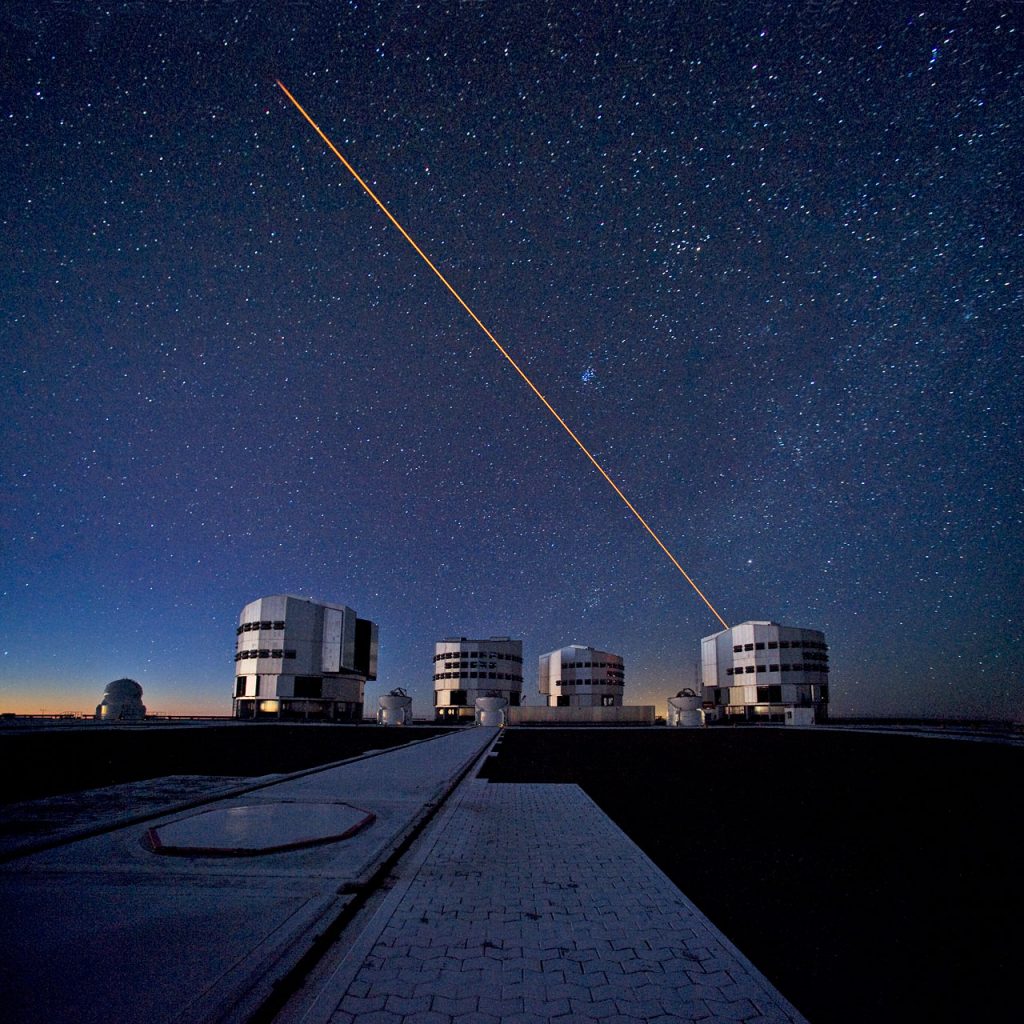
- Following of “Transforma Chile #ReactivaciónDigital” investment plan announced yesterday, Brad Smith, President of Microsoft, met with ESO authorities to close a new stage of their collaboration agreement.
- Teams from both organizations will use Artificial Intelligence (AI) to analyze large volumes of atmosphere data and optimize the cutting-edge science performed by ESO telescopes. Microsoft will deliver resources from its AI platform and ESO will work in cooperation with professionals and universities in Chile. In addition, Microsoft made available resources from its $3 million of dollars Artificial Intelligence and Cloud platform.
Santiago, Chile — In line with Microsoft’s recent announcements in Chile, Brad Smith, President of Microsoft, met with an ESO delegation, headed by its Director General , Xavier Barcons, to sign a new step of their agreement that addresses to optimize and enhance the science made from ESO Paranal Observatory telescopes through Artificial Intelligence (AI).
Thanks to this initiative, ESO and Microsoft will work in three areas of great interest for the operations of the Paranal Observatory. The first project is Turbulence Nowcasting, which makes real-time weather and atmospheric predictions to determine whether weather conditions are suitable for different observations. The second project is Anomaly Detection in calibration images taken with ESO´s scientific instruments. The visual inspection of the images is replaced by the automatic inspection through Machine Learning algorithms. The third project is Adaptive/Predective Control on adaptive optics, a technique that allows to correct in real time the distortions caused by the turbulence of the Earth’s atmosphere, making the obtained images almost as sharp as those taken from space.
Microsoft will allocate resources from Microsoft Research, its research division and AI specialist, to analyze large volumes of data from Earth’s atmosphere. Microsoft will also donate resources from its Cloud and AI platform for the equivalent of $3 million of dollars.
ESO researchers will use these advances in the day-to-day scientific operations of ESO’s Paranal Observatory. This work will be carried out by the observatory’s local engineering team, in collaboration with universities and companies in Chile to enhance the use of AI at a local level. Research will include training programs to strengthen knowledge transfer in the country.
This partnership began to develop on Brad Smith’s previous visit in 2019 to the ESO Paranal Observatory, located in Región de Antofagasta, at Chile’s northest.
“Since Galileo pointed his telescope at the night sky more than 600 years ago, technology has propelled humankind’s understanding and discovery of space,” said Brad Smith, president of Microsoft. “Today, cloud computing and artificial intelligence continue to accelerate the work of modern-day astronomers. We’re so proud to partner with the European Southern Observatory as they will explore our digital technology to optimize their telescopes to accelerate their scientists’ work from taking decades to days”
“Astronomy is also facing a digital transformation. We must adopt the concepts of Industry 4.0, an important factor to understand in the future the complexity of the operations of a revolutionary telescope such as ESO’s ELT. Thanks to this alliance, we will learn to face complex problems in a state-of-the-art observatory such as Paranal. At the same time, we want to pass on what our colleagues have learned to the local community through companies and universities in Chile” said Claudio Melo, ESO representative in Chile.
Both initiatives started as proofs of concept led by EY-Metric Arts, Microsoft partner in Chile, who with its team of astronomers specialized in Artificial Intelligence contributed to taking the first steps in the development of this technology.
“As EY Chile, we see a great space for cloud and AI technologies to strongly impact the current astronomical operation, in order to lay the foundations for the astronomical operations of the future. We also see a huge opportunity to take advantage of these pioneering initiatives, to link local talent and test solutions that can eventually be transferred to other industries”, Patricio Cofre, Partner at EY Chile
About ESO
ESO is Europe’s leading intergovernmental astronomical organization and the world’s most productive astronomical observatory. It has sixteen member countries: Austria, Belgium, Denmark, Finland, France, Ireland, Italy, the Netherlands, Poland, Portugal, the United Kingdom, the Czech Republic, Sweden and Switzerland, along with Chile, host country, and Australia as a strategic ally. ESO develops an ambitious program focused on the design, construction and operation of powerful ground observation facilities that allow astronomers to make important scientific discoveries. ESO also plays an important role in promoting and organizing cooperation in astronomical research. ESO operates in Chile three unique observation facilities in the world: La Silla, Paranal and Chajnantor. At Paranal, ESO operates the Very Large Telescope in conjunction with its VLTI (Very Large Telescope Interferometer), the world’s most advanced, as well as two tracking telescopes: VISTA (Optical and Infrared Tracking Telescope for Astronomy), which works on infrared, and the VST (VLT Survey Telescope), which tracks in visible light. ESO is also a partner of two facilities in Chajnantor, APEX and ALMA, currently the largest operating astronomical project in the world. Finally, in Cerro Armazones, near Paranal, ESO is building the 39-meter ELT (Extremely Large Telescope), which will become «the largest eye in the world to look at the sky».
About Microsoft
Microsoft (Nasdaq “MSFT” @microsoft) enables digital transformation for the era of an intelligent cloud and an intelligent edge. Its mission is to empower every person and every organization on the planet to achieve more.
Media contact:
IDENTIDAD CORPORATIVA
Mónica Solís / [email protected]
Pamela Silva / [email protected]



